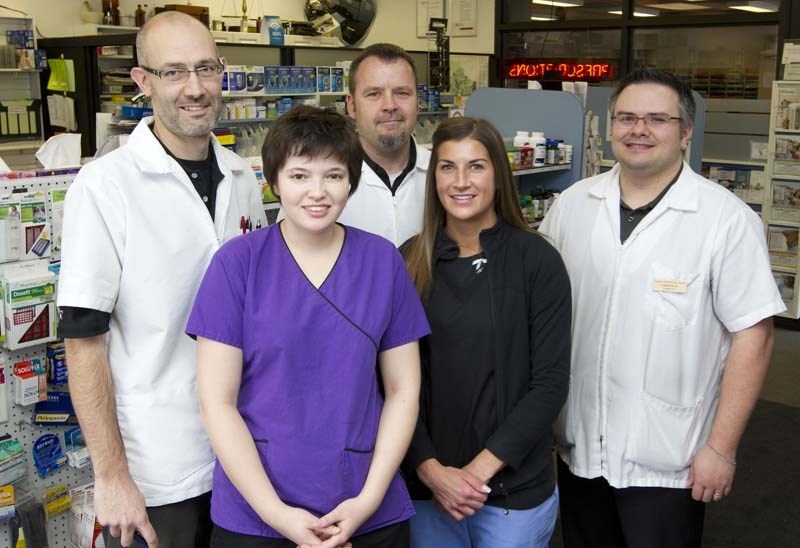Things are changing in neighbourhood pharmacies and not only for the druggist.
When the new compensation fee structure for pharmacy services comes into effect April 1, pharmacy technicians will be expected to take on new responsibilities.
“I think technicians are going to be used more,” says Holly Charron, pharmacist and manager at Liberton pharmacy in St. Albert.
“They are going to have more power and more authority so that the pharmacist can be doing the medication reviews and injections.”
A four-year agreement between the Alberta Pharmacists' Association and the province, reached last month will pay pharmacists between $20 and $100 for services such as counselling on smoking cessation and creating patient care plans.
In accordance with the agreement, pharmacy technicians are now recognized as a regulated profession through the Alberta College of Pharmacists.
Beginning in July 2011, technicians must complete an accredited technician program and pass a national exam. With regulation comes more responsibilities, such as being able to do a final check on prescriptions.
“The pharmacy technician for example can be responsible for ensuring the right drug goes into the bottle while the pharmacist is responsible for ensuring that this is the right drug for the patient,” said Dale Cooney, deputy registrar at Alberta College of Pharmacists.
“They are held accountable and responsible for the work that they do.”
There are currently 353 fully regulated technicians in the province and 991 that are in the transition process, meaning they have completed some but not all of the requirements.
The majority of regulated technicians are working in hospitals.
“There are not enough regulated techs yet in community pharmacy to completely change the workflow,” said Cooney.
Corporate pharmacies have been using technicians to their full scope of practice for years, adds Charron, but they are becoming increasingly important to smaller dispensaries.
Grandin Prescription Centre is currently looking for a regulated technician to join their team of five pharmacists and two assistants.
Now that clinical services provided by pharmacists have been officially recognized, the majority of the technical work – prescription intake, computer entry, counting pills, inventory – will fall into the laps of the technicians, said co-owner Ryan Diprose.
“Pharmacists don’t have the time to do those tasks anymore so you rely on technicians to run and manage a lot of the physical dispensing.”
The new definition of roles in the dispensary comes with a change of mindset for pharmacists and patients, he said.
“The meat and potatoes of pharmacy for so long has been driven by quantity of prescriptions.”
The clinical services will take up more time, admitted Diprose, “but at the end of the day they have more value than simply dispensing a few bottles of pills.”
He sees the expansion in the roles of pharmacists and technicians as a step in the right direction.
Charron anticipates pharmacy technicians will become even more valuable to the industry as dispensaries face cutbacks.
“Sometimes instead of having two pharmacists you can have a pharmacist and a tech. With all the budget cuts, pharmacies are always looking to save money.”




